MRT network reliability dips in August as LTA begins monthly performance reporting
The Land Transport Authority (LTA) reported a dip in the MRT network’s reliability in August 2025, with the mean kilometres between failures falling to 1.74 million train-km. This comes as the authority shifts to monthly reporting to enhance transparency and accountability.

- The Land Transport Authority (LTA) reported a decline in MRT network reliability for August 2025, marking its first monthly reliability update.
- The overall mean kilometres between failures (MKBF) fell to 1.74 million train-km, with several lines experiencing notable decreases.
- LTA plans to include new indicators, such as commuter impact and train punctuality, in future reports for a more comprehensive assessment.
SINGAPORE: The reliability of Singapore’s MRT network declined in August, according to the Land Transport Authority’s (LTA) inaugural monthly rail reliability report released on 10 October 2025.
The move from quarterly to monthly reporting aims to improve transparency and give the public a clearer picture of train performance.
LTA uses a 12-month moving average of mean kilometres between failures (MKBF) — a measure of how far trains travel before delays of more than five minutes. As of August’s end, the MRT network’s MKBF stood at 1.74 million train-km, down from 1.82 million train-km in July.
The authority’s overall target remains at 1 million train-km.
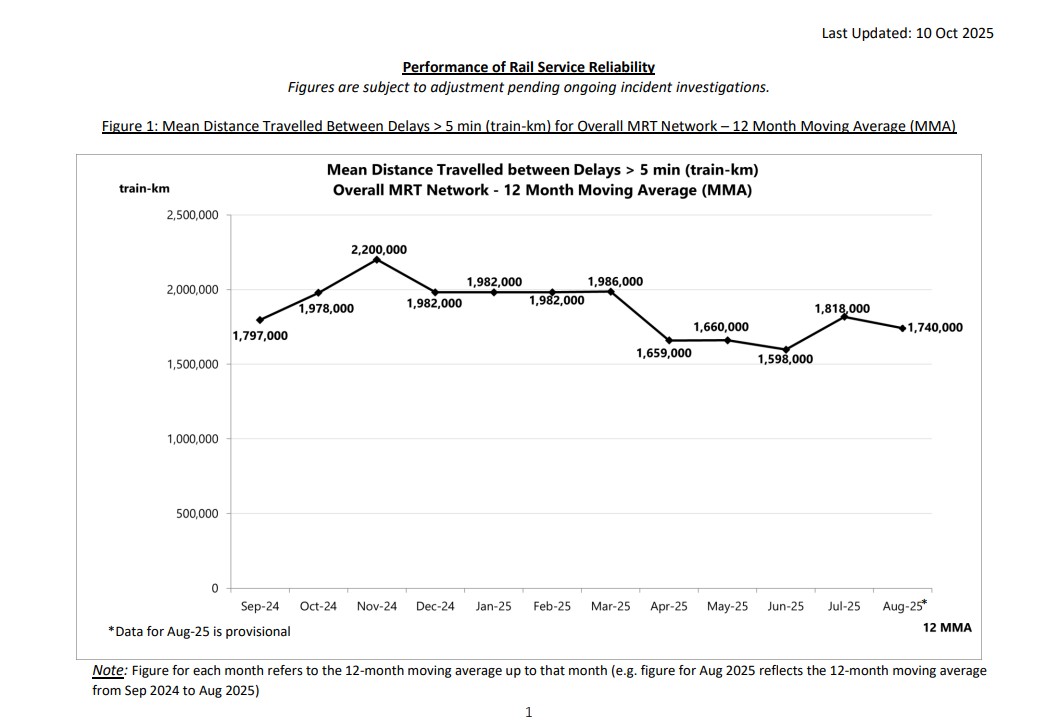
Line-by-line performance
The Downtown Line’s (DTL) MKBF dropped sharply from 4.13 million to 2.76 million train-km, while the North East Line (NEL) fell from 4.26 million to 2.14 million train-km.
Each line recorded one significant delay in August, which LTA said illustrated the sensitivity of the MKBF measure to isolated incidents.
The East-West Line (EWL) also saw a decline from 2.02 million to 1.68 million train-km.
In contrast, both the North-South Line (NSL) and Circle Line (CCL) showed improvement.
The NSL rose from 1.41 million to 1.65 million train-km, while the CCL increased from 1.07 million to 1.25 million train-km.
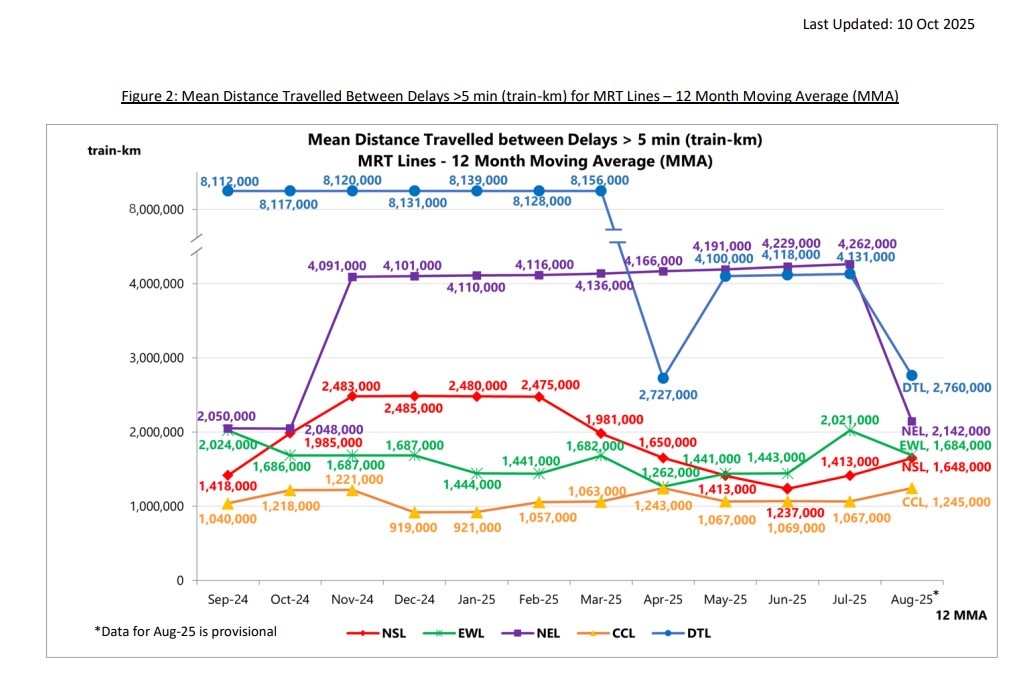
Delays and disruptions
There were four MRT delays lasting more than 30 minutes this year, with two occurring in August.
LTA said it has been publishing this data alongside MKBF figures to highlight the frequency of severe disruptions.
In 2024, the MRT network recorded seven such major delays.
Inclusion of the Thomson-East Coast Line
From this report, the Thomson-East Coast Line (TEL) will be included in reliability metrics.
LTA explained that the line is in its early “bathtub” stage — an engineering term describing the initial period of higher faults as systems stabilise.
LTA said that since TEL’s phased opening, it has worked with the operator and original equipment manufacturers (OEMs) to address issues, particularly involving the new signalling system.
The authority noted that while the TEL has gathered one year of “more representative data,” its performance will likely stabilise only after full completion in 2026, when Stage 5 opens.
LRT network performance
The overall LRT network’s MKBF fell slightly from 442,000 train-km in July to 420,000 in August.
The Sengkang–Punggol LRT’s reliability declined from 1.26 million to 840,000 train-km, while the Bukit Panjang LRT improved from 192,000 to 209,000 train-km.
Two of the four long delays recorded this year occurred in August.
Looking beyond MKBF
LTA acknowledged that while MKBF remains an internationally recognised measure, it does not fully reflect the extent of service disruptions or their impact on commuters.
The authority said it would continue to publish the number of delays exceeding 30 minutes monthly, while exploring additional indicators such as the proportion of scheduled mileage travelled and train punctuality.
“These indicators would allow more international comparisons with other metro systems that use different measures,” LTA stated.
Future reports may also include data on the number of commuter trips affected by disruptions, taking into account both duration and reach of incidents.

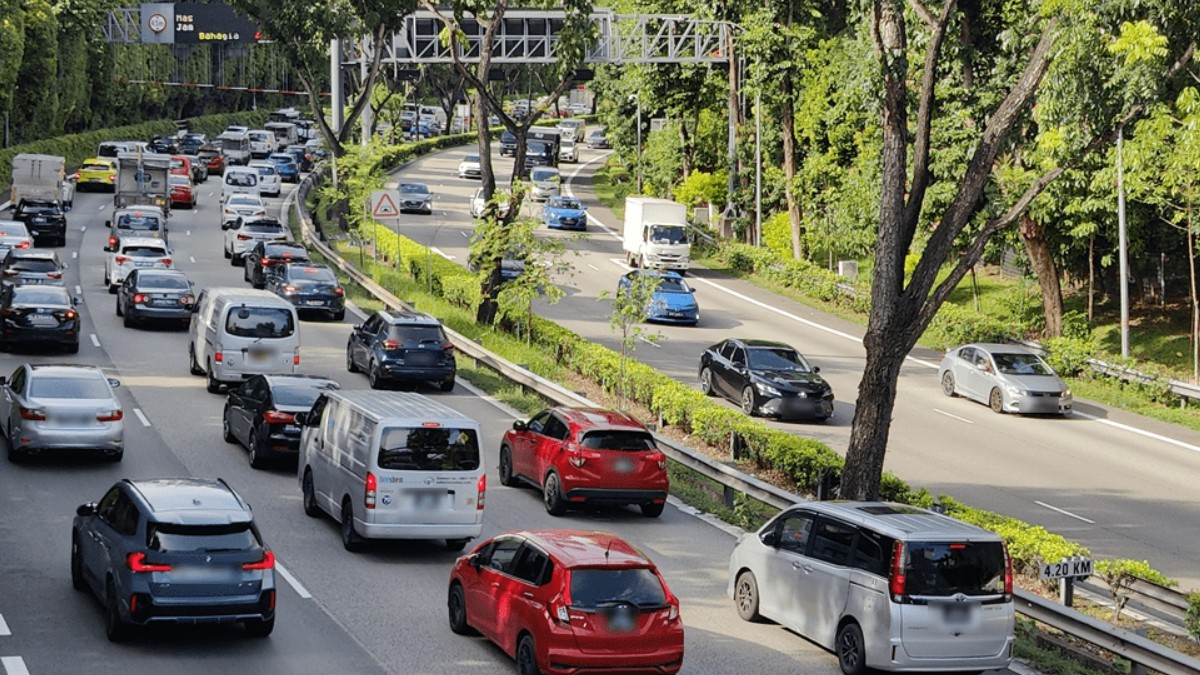
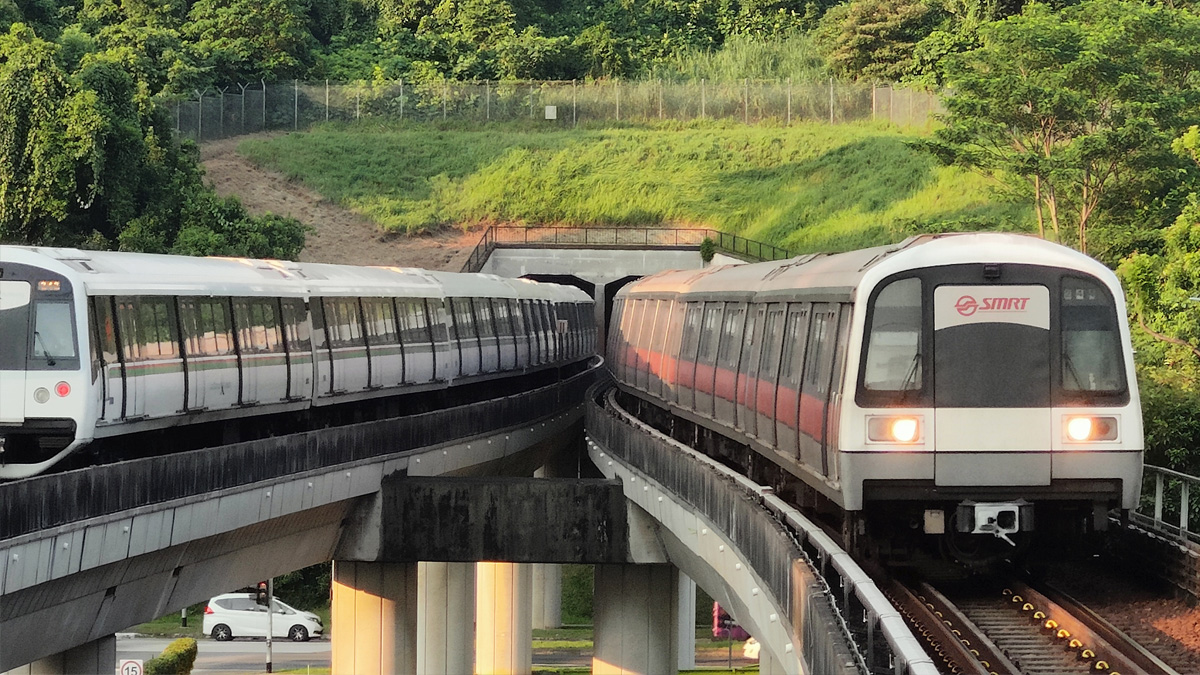
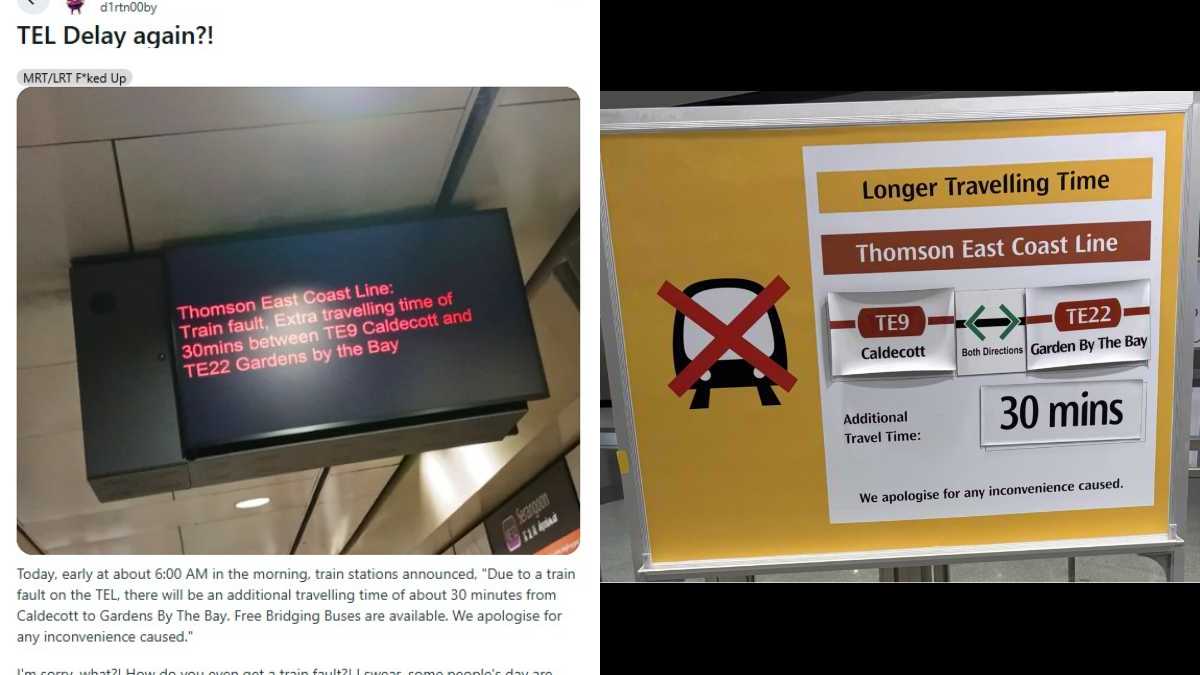
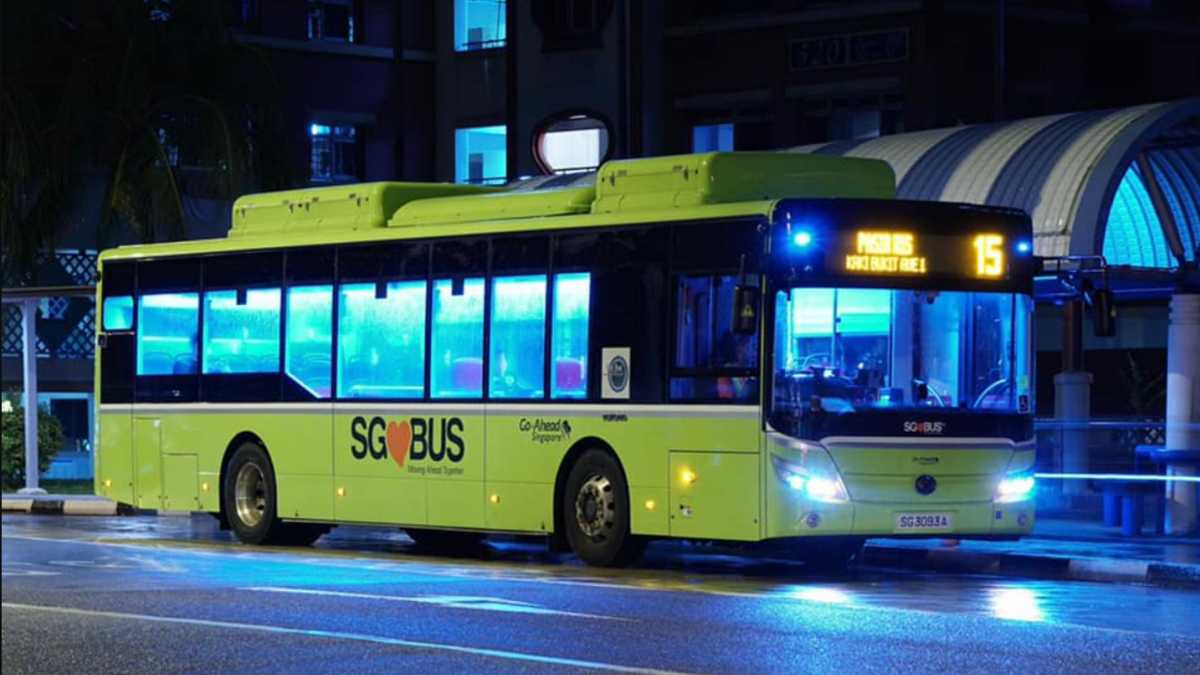
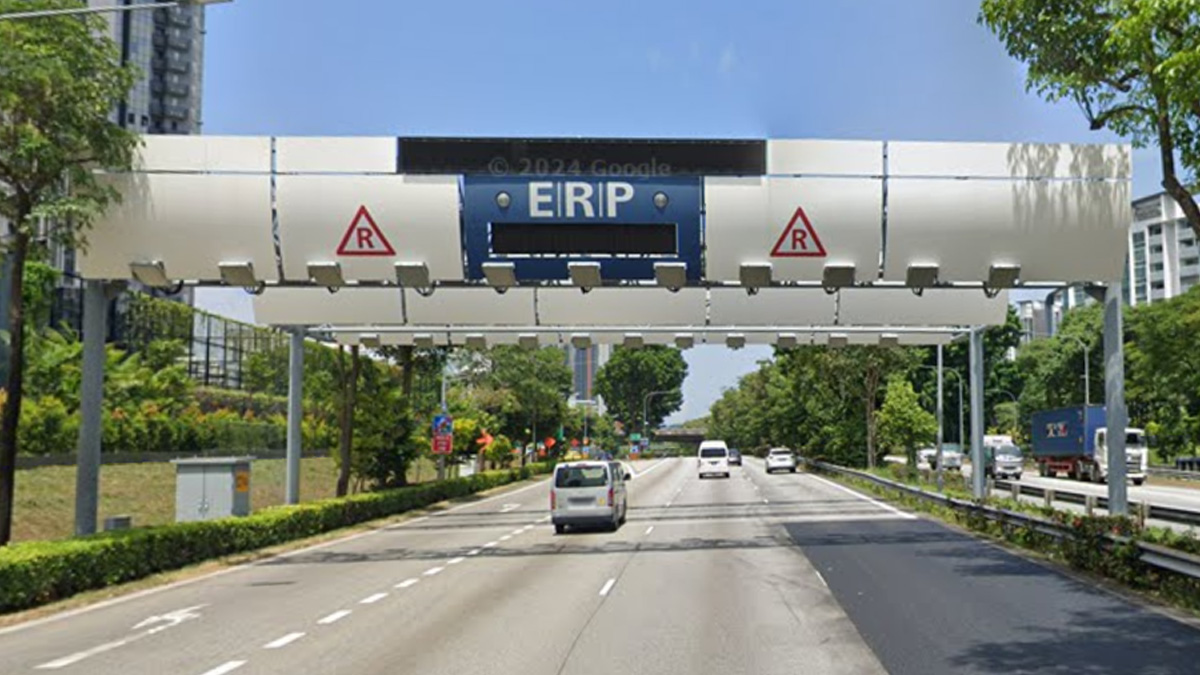
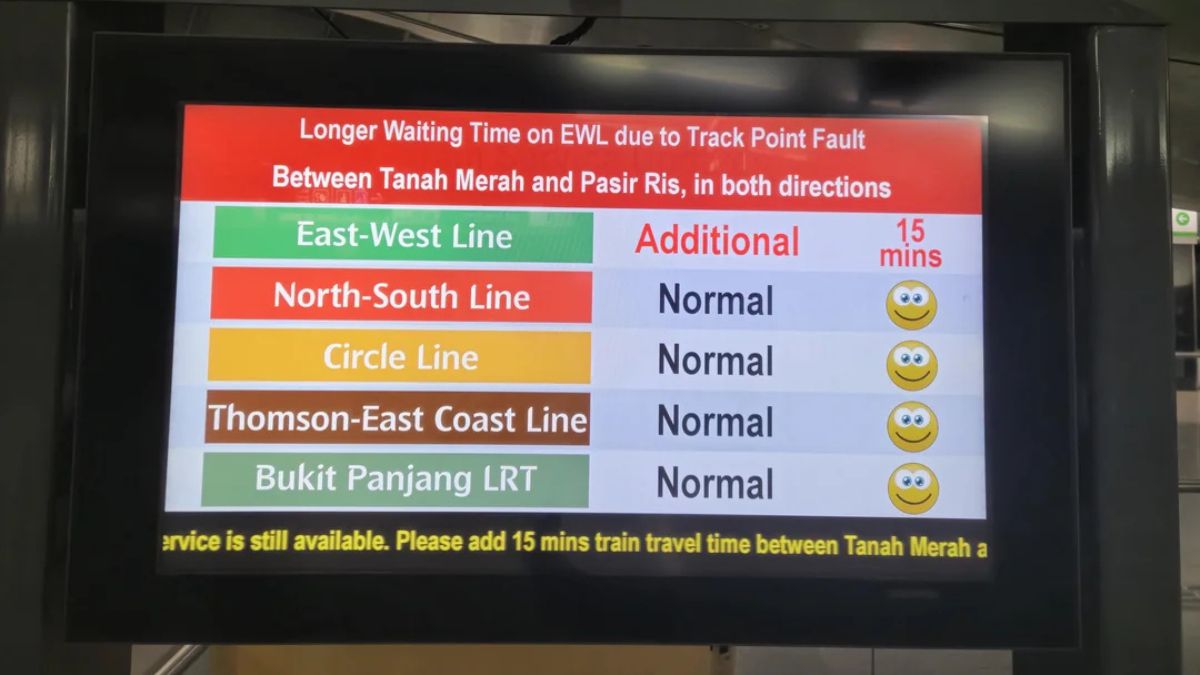
0 Comments